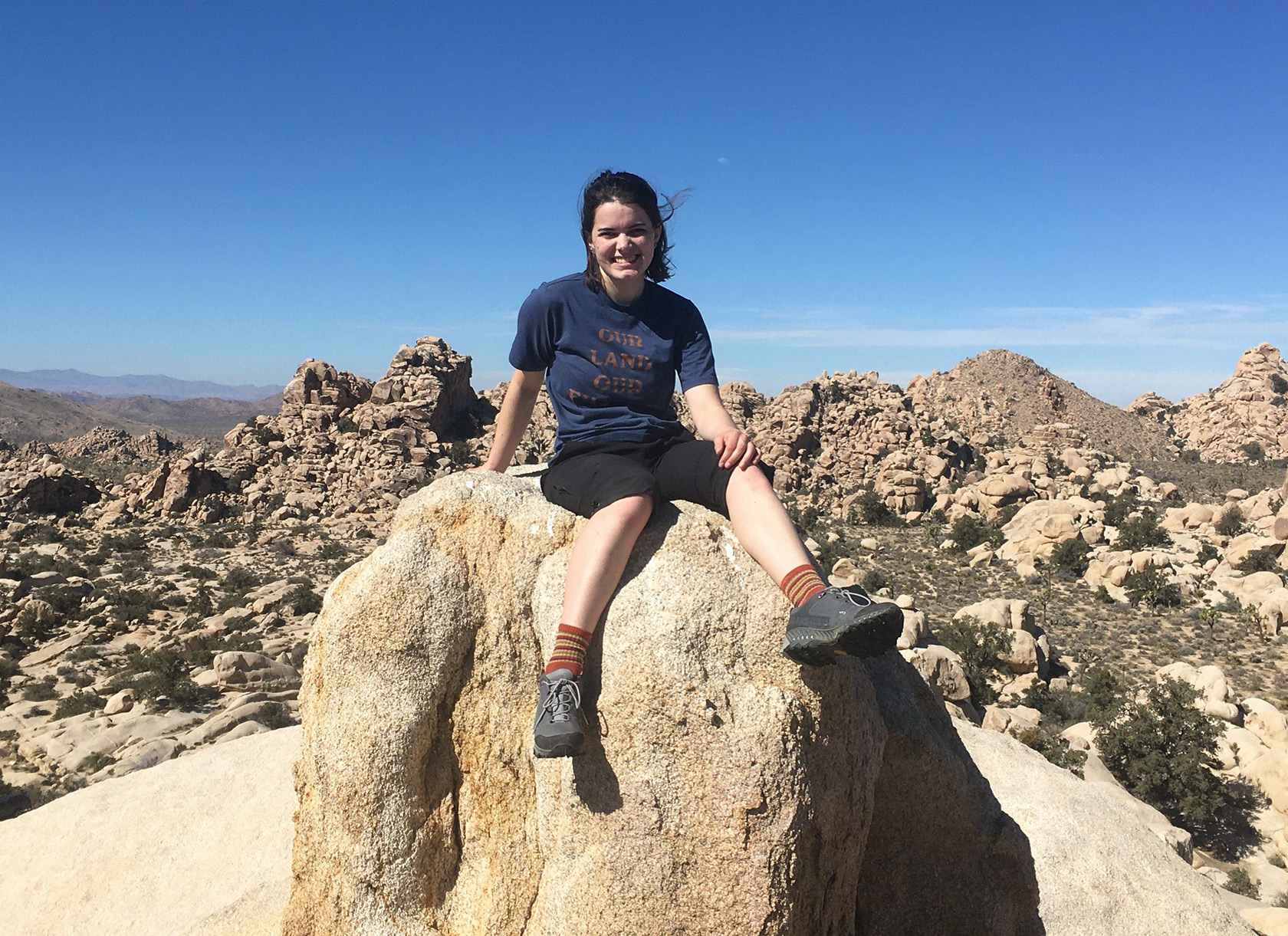
In examining the ways in which humankind can mitigate the effects of climate change, one major contributing factor stands in the way: humankind itself. In 2007, the United Nations’ Intergovernmental Panel on Climate Change determined that human activity has been responsible for almost all of the increases in greenhouse gas emissions over the past 150 years. As the public’s understanding of climate change has grown, researchers are examining how societies can live, work, and eat in more sustainable ways.
This summer, Anna Burns ’22 is examining potential methods to evaluate and reduce negative impacts within agriculture. She’s working with Marc Los Huertos, the Stephen M. Pauley, MD ’62 Associate Professor of Environmental Analysis at Pomona College, who’s exploring the possibility of using drone technology to measure particulate matter emissions, such as air pollution, on crop and cattle farms in California. The project is part of The Claremont Colleges’ EnviroLab Asia initiative, which aims to promote cross-disciplinary research and experiential learning. In recent years, the demand for agricultural drones has risen in parts of Asia, including China, and while the use of drone technology to measure particulate matter emissions is rare, it’s shown great promise. Burns received an environmental analysis research grant from Scripps to support her work.
Currently, some farmers use drones’ sensor and imaging capacity to assess the different nutrient needs across a crop field with variant conditions, potentially lessening the use of resources—such as fertilizers—that heavily impact the environment. By adding air quality data to the drones’ assessments, Burns and Los Huertos plan to identify practices that help reduce particulate matter in land use. “Knowing temporal and spatial specifics could potentially help us understand what times of day have the highest level of air pollution and then evaluate what can be changed within the farming process to lessen those impacts,” Burns says.
Los Huertos adds that the impact of particulate matter reduction could go far beyond improved land use practices. “Some rural communities have worse air quality conditions than urban environments,” he says. “If we can address air quality issues, we can address huge public health issues.”
Under Los Huertos’s supervision, Burns is managing the technology needed to test drone measurements from a distance. Due to COVID-19, the bulk of the project’s on-the-ground research has been put on hold, and Burns’ day-to-day work has primarily focused on coding and wiring the micro-computer that will be attached to the drone. While she was initially disappointed not to be working in the field as originally planned, she’s enjoyed learning more about programming languages and is looking forward to data collection.
“She’s one of the most thoughtful and dedicated students I’ve worked with,” Los Huertos says. “She’s learned how to use the Raspberry Pi microprocessors, she’s taught herself rudimentary Python on her own, and she’s learned how to solder, interpret wiring diagrams, and think about how to collect and process data. She exceeds my expectations every single day with what she’s able to accomplish.”
Burns has been interested in agricultural issues since she worked on a farm in eighth grade, but she spent her first year of college “adamantly against” the idea of taking environmental analysis classes because she felt individuals couldn’t make an impact on a problem as large-scale and inevitable as climate change. Instead, she intended to major in mathematics, a discipline she enjoys for its problem-solving process.
But when she learned that a mathematics track existed within Pomona’s environmental analysis program, she saw an opportunity to re-evaluate her relationship with environmental justice and focus her energy on an area where she could make a positive impact. Now, Burns is pursuing a major in mathematical environmental analysis through Pomona’s program, as well as a minor in German at Scripps. Her major allows her to combine the fields of math and environmental analysis to study the data science behind food systems. “Agriculture is all about inputs and outputs and maximizing them for a healthier planet and people, in both the economic and physical sense,” she says. “When you get down to it, that’s just math!”
Burns sees her summer project as an opportunity to gain research experience that will serve as the foundation for a career in sustainable agriculture. While she doesn’t have a specific path in mind, she envisions herself advising small farmers on how to adopt environmentally friendly processes in cost-effective ways. “This project combines my passion for agriculture and the environment with technology and data science, which is exactly what I want to do as a career,” she says. “Making a difference doesn’t mean that it’s up to you to save the world; it means doing what you can with what you have to fight injustice.”

